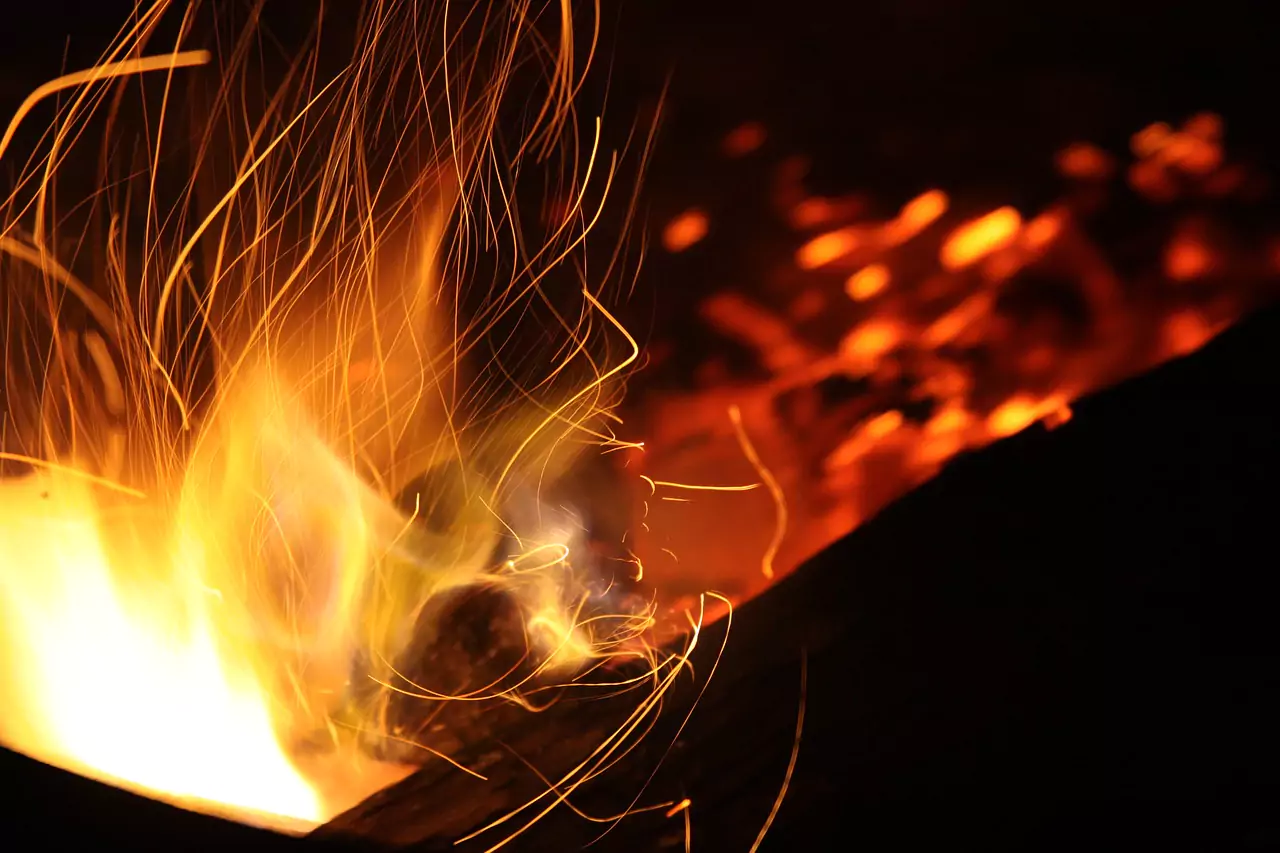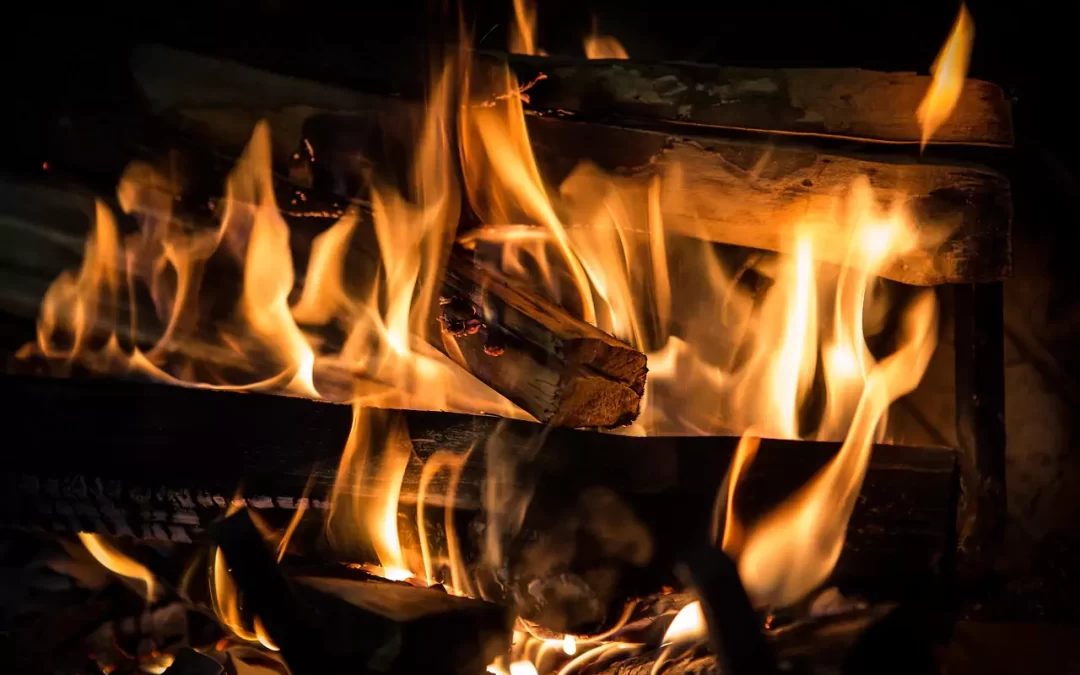
Heating your home with a fireplace - a way to reduce high heating costs
Modern fireplaces (including models with a water jacket), unlike classic designs, have both an aesthetic and practical function. They allow for effective and, most importantly, economical heating of even large houses. How is this possible?
Classic fireplaces only heat the room in which they are installed. The heat together with the exhaust gases goes directly to the chimney and is discharged outside (i.e. marinated). Heating with a fireplace with a water jacket works completely differently. The exhaust gases gradually heat the heating medium (i.e. water) located in a special pipe or tank. The fireplace is connected to the central heating system, thanks to which hot water goes to the radiators and thus heats another room. However, is underfloor heating with a fireplace possible? Absolutely. It works on a similar principle to central heating.
How does a fireplace with a water jacket work? Step by step explanation
The most important advantage of modern fireplaces (including those equipped with a water jacket) is the possibility of connecting to a central heating system or underfloor heating, i.e. the popular underfloor heating. But How do fireplaces with a water jacket work?
The built-in water jacket makes the fireplaces characterized by very high efficiency exceeding 80%. But what is the water jacket really and what functions does it fulfill? The water jacket in fireplaces is a tank or pipe filled with a heating medium (water). The structure of the water jacket is designed in such a way as to receive the maximum amount of heat from the furnace. For this reason, the water jacket is also called a heat exchanger.
Operation of a fireplace with a water jacket – continued
Depending on the specific fireplace model, the water jacket has a capacity of 45 dm³ or 65 dm³ (you can also find models with a different jacket capacity on the market). The water in the tank or pipe is quickly heated and distributed to the connected system. This solution is flexible because when installing the fireplace, users can choose which rooms will be heated (one, several or all).
A fireplace that heats the entire house must first of all have a sufficiently high nominal power and the so-called heating load range. The most efficient fireplaces enable effective, ecological and, above all, economical heating of houses with an area of up to 250 m². In practice, this means universal use.
What else is worth knowing about how a fireplace works?
Is it safe to heat the entire house with a fireplace? Can the water in the water jacket boil and damage the central heating installation or underfloor heating system? These and many other similar questions are asked by people who are planning an investment in purchasing a fireplace. The answer to all the above questions is simple. Heating your home with a fireplace is completely safe. There is no risk of excessive water heating (boiling).
Fireplaces equipped with a water jacket (regardless of its capacity) have built-in effective and reliable protection. One of them is a temperature sensor that constantly monitors the water temperature. The key element of this safety system is the so-called cooling coil, which prevents the water from boiling (i.e. reaching 100℃). When the heating factor reaches a certain value, e.g. 95℃, the valve automatically opens and immediately lowers the water temperature. This entire process happens automatically without any user intervention. This means that even if you burn a large amount of wood for a long time, the fireplace is completely safe to operate.
Underfloor heating with a fireplace – what fuel (wood) is best?
Efficient and therefore economical heating with a fireplace with a water jacket depends on many factors. One of them is the type and quality of fuel (wood). The best fuel is seasoned wood from selected species of deciduous trees. Not only beech, but also birch and hornbeam burn perfectly. Recommended wood moisture ranges from 12% to 20%. By following these tips, users can count not only on maximum use of thermal energy (and therefore efficient and economical heating), but also on extremely low pollen and CO emissions. In everyday use, this means lower costs and the highest level of safety.
Underfloor heating with a fireplace equipped with a water jacket is as effective as in the case of central heating with a radiator system. This solution can be used in both new and modernized houses. The biggest advantage of underfloor heating is the lack of radiators, which take up space in rooms and often do not match the interior design.
A fireplace that heats the entire house – what savings can you count on?
A fireplace with a water jacket is an effective way to reduce the high costs of heating your home. The amount of savings depends on several factors. The first is the size of the house, the next is the method of insulation (or lack thereof), the next is the type of windows (single-pane, double-glazed or triple-glazed). The type of fireplace, and more specifically its power and the quality of the fuel (wood) burned, is also important. To sum up all the components, heating your house with a fireplace allows you to reduce high heating costs by several to several dozen percent. In some cases, the reduction in expenses amounted to 30% or even 40%.
So, is it worth investing in a fireplace with a water jacket that is characterized by high efficiency, reliability and aesthetic appearance? Definitely yes. Correct use (in accordance with the manufacturer's recommendations) will result in savings already in the first heating season.
Heating with a forced-air fireplace – the most important information
Modern forced-air fireplaces, like models equipped with a water jacket, enable effective and virtually loss-free heat distribution throughout the house. An efficient air distribution system makes forced-air fireplaces fulfill both aesthetic and useful functions. A solid and heavy fireplace insert with a large capacity allows not only a large load, but also the accumulation of a large amount of thermal energy.
When the fireplace insert is heated, the heat exchanger effectively heats the air. The hot air is then distributed through channels throughout the rooms. Selected models of forced-air fireplaces are equipped with effective exhaust gas after-combustion technology. Thanks to it, the temperature in the combustion chamber is even higher, without the need to add (i.e. use) fuel. Modern fireplaces with hot air blowing are adapted to heat recovery systems.
Heating your house with a fireplace – installation and operation
Correct installation and operation of the fireplace are the two most important activities to ensure trouble-free operation. The entire process of installation and connection to the central heating, heat recovery or underfloor heating system must be carried out by a company specializing in this type of services.
Self-assembly is not only dangerous, but may also cause numerous damages that are not covered by the warranty. For this reason, the only right choice is to use the services of experts.
A fireplace that heats the entire house, and more precisely, maintenance activities related to its operation are limited to the necessary minimum. How is this possible? Primarily due to an innovative solution such as the clean glass system. In everyday use, this not only allows for extremely phenomenal observation of the vision of fire, but also reduces cleaning activities.
Additionally, some fireplaces are equipped with a massive cast iron grate with a tilting structure. This solution makes cleaning the furnace (thorough ash removal) convenient and, above all, quick. The operation of modern fireplaces (with forced air or a water jacket) is definitely more comfortable, simpler and faster than traditional fireplaces. This combination means that users can enjoy having a fireplace that requires minimal effort to operate.
A fireplace that heats the entire house – what should make it stand out? A few words about technical aspects
In order for heating a house with a fireplace to be effective and economical, several conditions must be met. The first one concerns the heating load. For large houses, this parameter should be in the range from 10.5 kW to 27 kW. In turn, the nominal power should be around 21 kW.
Fireplaces installed in smaller houses do not have to be so powerful. Well-insulated buildings with a living area of less than 150 m² can be heated efficiently, ecologically and economically with fireplaces with a nominal power of 16 kW or 19 kW. In turn, a sufficient heating load range is from about 8 kW to about 24 kW. All values given above should be treated as approximate.
Other technical parameters of fireplaces
The exhaust gas temperature and the active area of the inlet and outlet grilles are also important. When choosing a specific model, it is worth paying attention to the material from which it is made.
The most durable fireplaces are made of special P265GH boiler steel. The increase in heating prices means that more and more people decide to use an additional heat source. Fireplaces with a water jacket or a hot air blowing system, due to their high efficiency, reliability and easy operation, are increasingly found not only in new, but also in several, a dozen or even decades-old houses.


